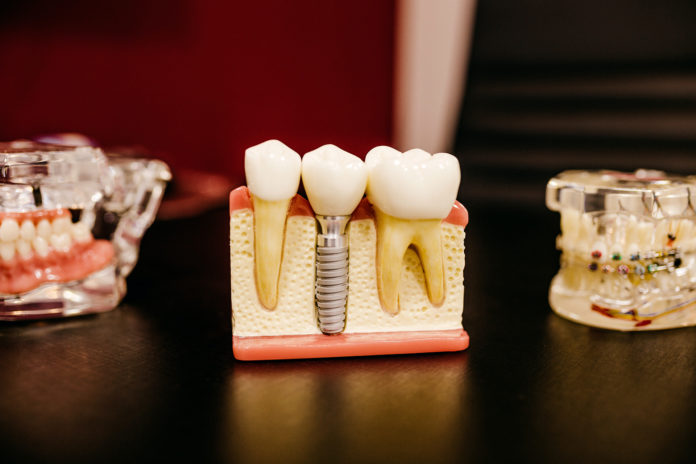Our body can do much more than what most people give it credit for. It can heal its own organs and tissues and can regenerate a broken bone. But, there is one bone type that will not heal itself – the teeth.
Based on recent statistics, 3.75% of American adults between the ages of 20 to 64 have no teeth. That means millions of Americans are dealing with total tooth loss. For others, a single missing tooth can be a problem. So, they need a treatment that can fill in that open gap.
That’s where dental implants come into play. As one of the most popular tooth replacement treatments, dental implants act as artificial teeth and remain secured inside the jawbone. But, because of the many myths surrounding it, some are adamant about having their fallen teeth replaced. Here, we decided to cover all those myths versus facts, you should know about. Take a look at some of the most popular myths debunked below.
1. Myth: Dental Implant Treatment Hurts
Fact: Because this is a surgical procedure, people are worried it will hurt. But, the procedure itself doesn’t cause any pain. The nerves around the dental implant area become numbed with the help of local or general anesthesia.
The anesthesia interrupts the nerve signals to the brain and body, preventing the central nervous system from processing pain during the procedure. What you will feel is pressure without actual discomfort.
This kind of pressure is normal since the oral surgeon will be working with the jaw bone. When the anesthesia wears off, mild discomfort and pain can appear. This is also a normal part of the healing process and it’s not as debilitating as you might imagine.
2. Myth: Dental Implants Expose You to Long-Term Risk
Fact: According to the National Institutes of Health, dental implants have a 90% to 95% success rate more than 10 years. They are a practical surgical component that acts as orthodontic anchors with minimal risks.
Long-term complications are very rare. But, they can happen. In some patients if the surgeon positions the dental implant very close to the nerve, it can result in nerve damage. At other times, the body could reject the implant. Although this doesn’t occur too often, it can happen. Overall, dental implants have a much better success rate than a possibility for risks.
3. Myth: Dental Implants Need a Lot of Maintenance and Special Care
Fact: There is no need for special cleaning once you get dental implants. All you have to do is maintain proper oral hygiene, floss, and use mouthwash as you would normally do. Just treat them as a natural tooth and you will still reap the benefits.
4. Myth: You Can Spot a Dental Implant. It’s Too Different From the Natural Tooth
Fact: These products are made to mimic the form and color of your natural teeth. What that means is the anchor will not stick out like a sore thumb. Instead, it will blend in perfectly with the rest of the teeth, allowing you to enjoy a gorgeous smile.
5. Myth: Your Teeth Must Be in Perfect Shape to Get an Implant
Fact: While there are certain requirements for you to be a candidate for dental implants, it doesn’t mean your teeth must be in perfect shape. What you do need is proper jaw support, healthy gum tissue (ideally not affected by gum disease), and an empty spot from a missing tooth.
Individuals who lack jaw bone support can do a bone graft to restore it back up again. Although you may not qualify for the procedure, these qualifications are not that extensive. Therefore, it is relatively easy for a person to get dental implant treatment.
6. Myth: You Can’t Switch to an Implant If You’ve Been Using a Bridge
Fact: Regardless of whether or not you’ve been using a bridge, you can still switch to a dental implant. Consult with a doctor to see if your jaw bone has a strong foundation to support the implant and you are good to go.
As you can see, there are many misconceptions about dental implants. But now that we’ve answered the most popular ones, you will have an easier time deciding whether it is the right treatment approach for you.
References
https://www.nidcr.nih.gov/research/data-statistics/tooth-loss/adults
https://www.sleepdentistrydefined.com/dental-implant-facts/
https://www.ncbi.nlm.nih.gov/pmc/articles/PMC5774056/
https://www.delhidental.com/dental-implants-myths-facts/



